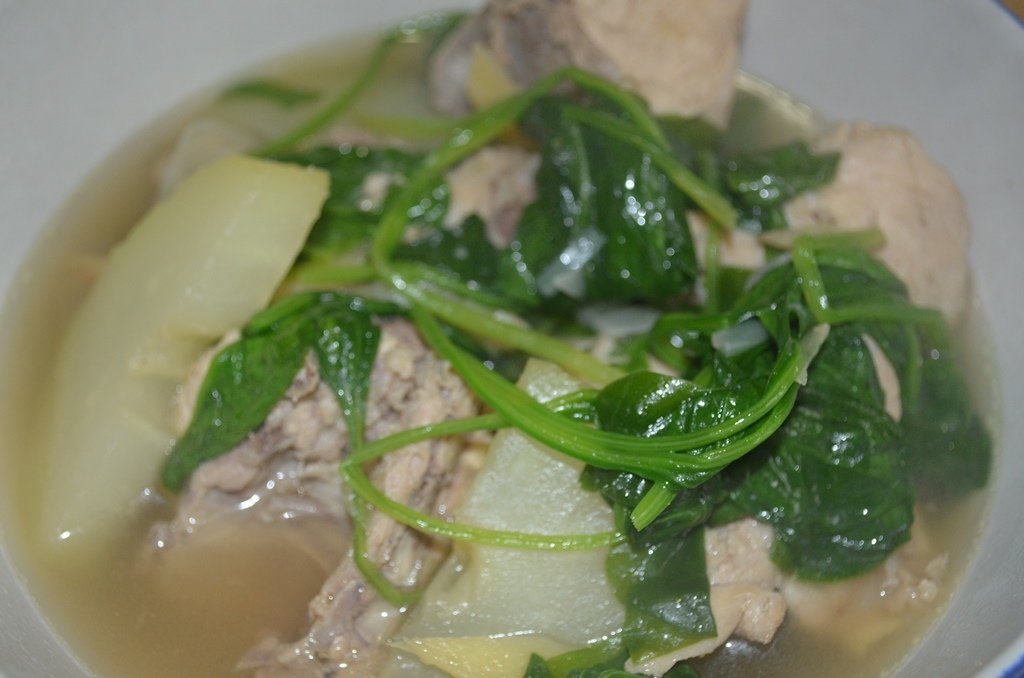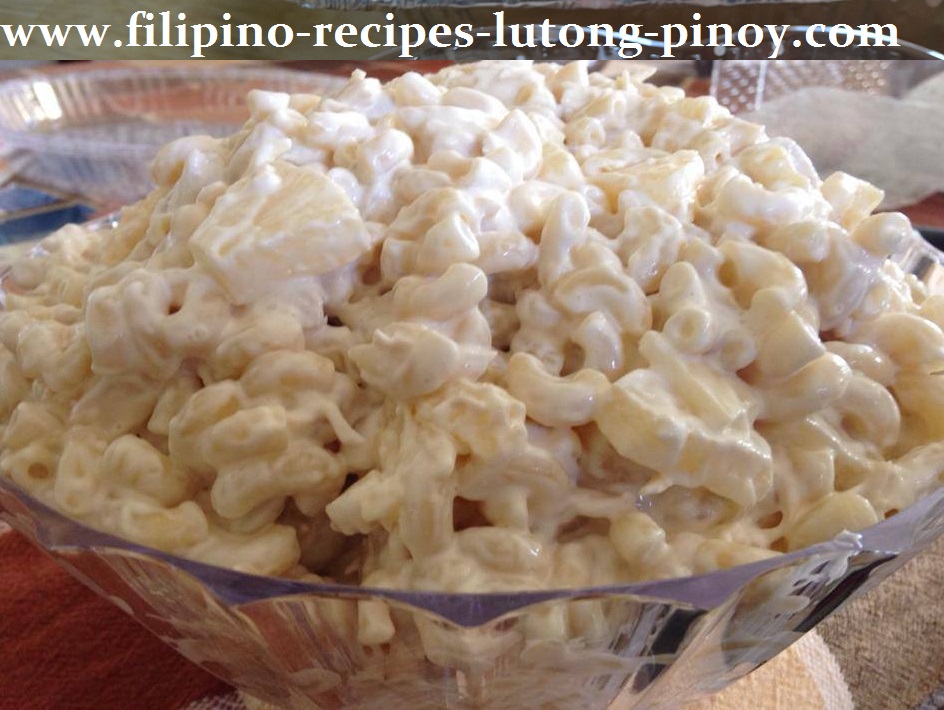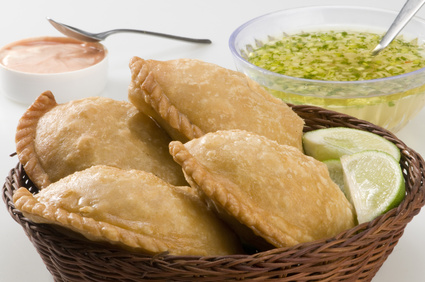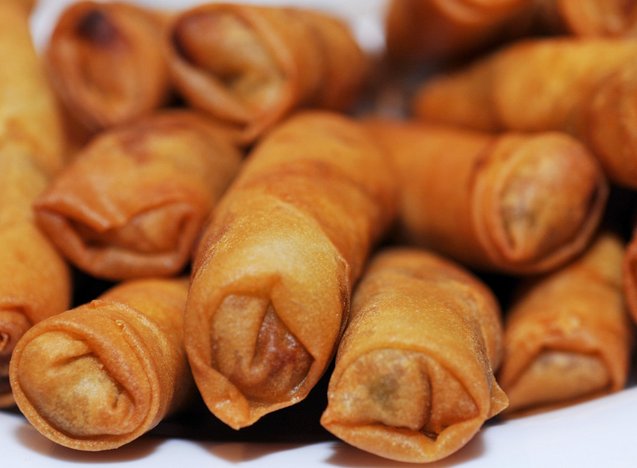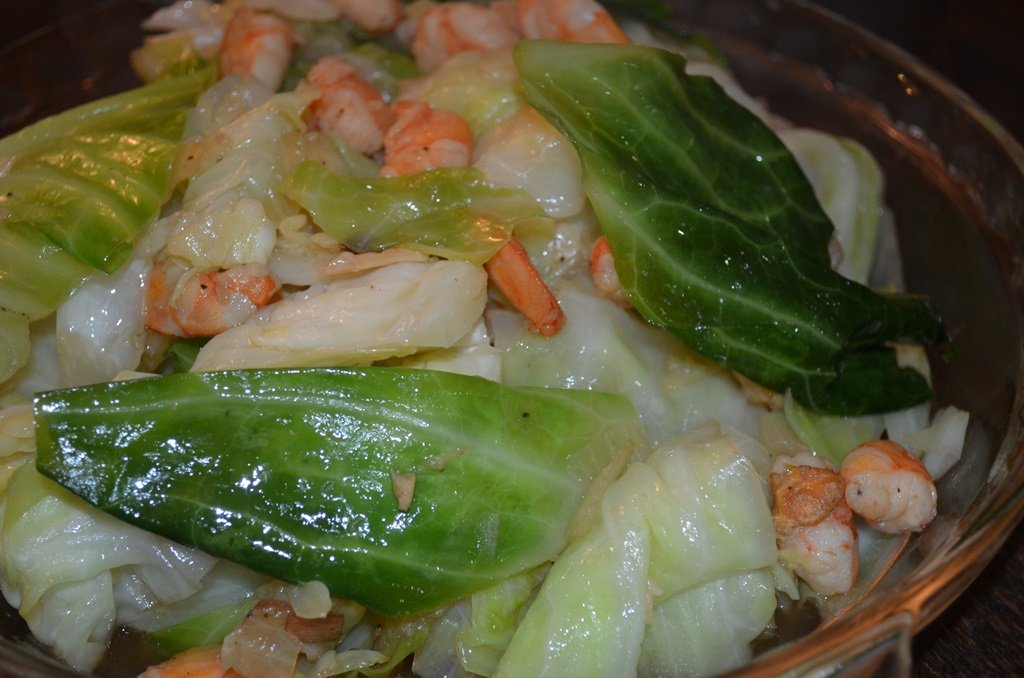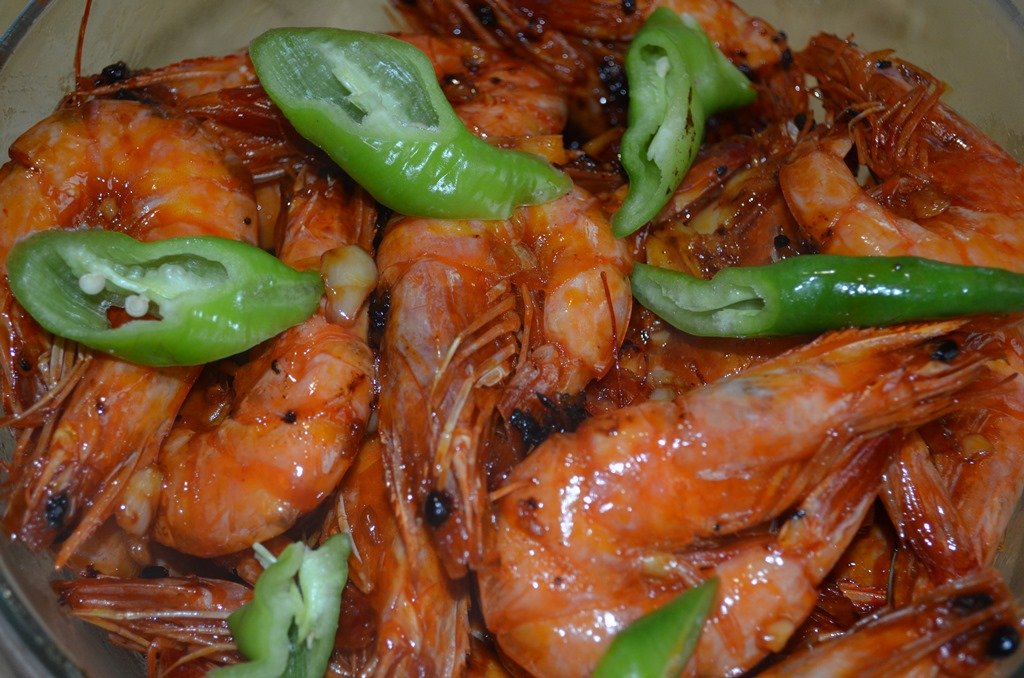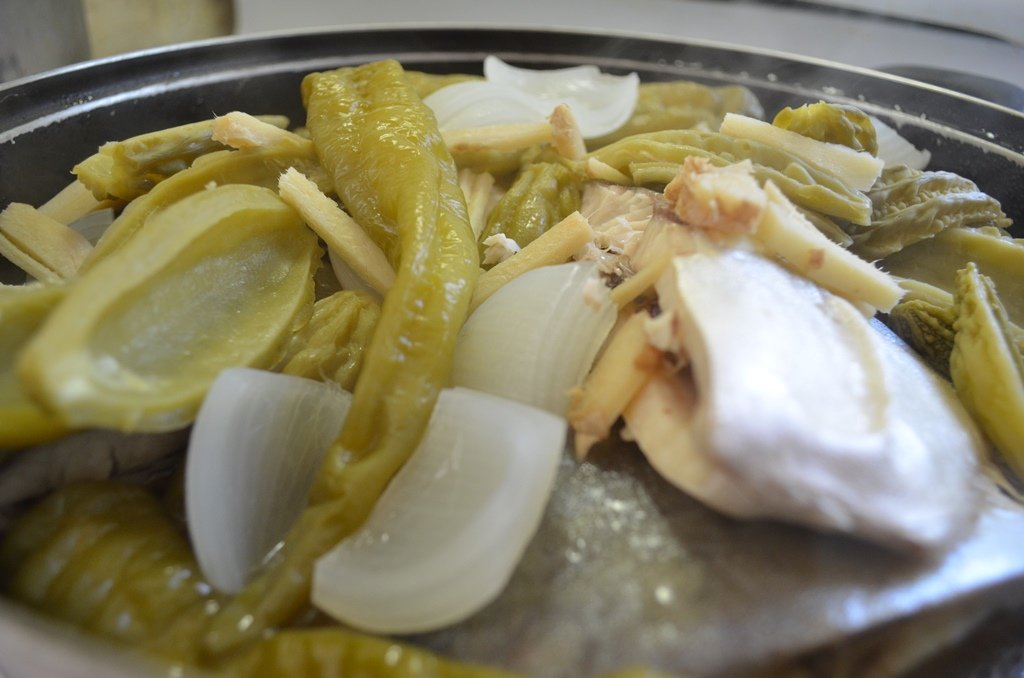Laing
(Taro Leaves Stewed in Coconut Milk)
|
Laing is a viand that refers to the taro leaves cooked in coconut milk or what we call here in the Philippines as ginataan. |
Cooking different individual vegetables in coconut milk is a common for Filipinos but the one we called laing is the most exceptional and of course my specialty too. Exceptional in a way that there is no dish prepared and cooked the same way as laing, the pride of all Bicolanos, the smooth taste and the tang from the ginger that makes a lot of people crave for it. A dish that not only serves in homes but in restaurants as well, laing is in demand here and abroad. But, why is it so special? The reason because it uses taro leaves and stems, so what’s the big deal. Taro leaves are at the same both easy and hard to cook. First is how to make it chewy but not mushy. Raw taro leaves and stems get mushy easily when boiled so some people without proper knowledge cooked them as is but cut the stems in about 3 inches long and the leaves in big sizes, they do it so that when it gets mushy some kind of form will retain. The second is the itchiness in the mouth. I’ve witness many discussions where people tried finding out a solution for the itchiness. Some say sun drying the leaves remove itchiness, some say it doesn’t. Some say not stirring when cooking removes itchiness and some say it doesn’t. I think it’s one of the seven wonders of laing, I sun dried, I stir a lot but no trace of itchiness is found in my cooking. Now cooking laing has developed many versions particularly sautéing and adding pork, garlic and onions. But my authentic recipe from Bicol is far different and simpler from that but taste the best. Boiling coconut milk first with some crushed ginger, the main attraction of laing is its strong gingery taste. Add the taro leaves, stir, add the dried surgeonfish (daing na labahita), season with salt and cooked for 40 to 60 minutes until its tender. Then it’s done, I always cooked this and get praised by the Bicolano I know, he said that nothing beats the original laing he had known since he was a child from his far hometown. And I agree. As far as I know, laing is the only way to cook taro leaves, don’t hesitate and follow my instructions.
Number of servings (yield): 8
Preparation time: 30 minutes
Cooking time: 60 minutes
Cooking Ingredients:
• Taro leaves and stems – 1 kg (dried)
• Dried surgeonfish (Daing na labahita) – 3 pcs
• Coconut milk – 4 cups
• Ginger – 4 knob (crushed)
• Salt – to taste
• Fish sauce – to taste
Cooking Direction:
1. Peel the skin off the stem of the taro stems. Using a pair of scissors, cut the taro stems into 1 cm length pieces and cut the leaves into 6 cm long and 1 cm wide strips. No need to be exact, it’s my preferred cutting.
2. Dry now in direct sunlight for 2 to 3 hours until the taro stems have shrink and the leaves turn dark green and crisp. Don’t worry, they’ll become firm and strong again when cooked.
3. Soak the dried surgeonfish in a bowl of water to reduce the saltiness of the fish.
4. In a cooking pot, pour 3 cups of coconut milk and add the crushed ginger and a bit of salt. Simmer over medium-low heat while stirring gently.
5. When the coconut milk is almost boiling, add the dried taro leaves and stems. Mix so that everything is soaked in coconut milk.
6. Simmer for 40 to 50 minutes until the taro leaves and stems are cooked. When the coconut milk is not enough, add the remaining cup of coconut milk. You may stir once or twice gently.
7. Meanwhile, drain water from the dried surgeon fish then rinse in running water. Using your hands remove the skin and tear the flesh into small bite size pieces.
8. Add the dried surgeon fish and stir. Adjust the taste with salt or fish sauce
9. Simmer for a few minutes more until the taro leaves and stems are fully cooked.
10. Turn off the heat. Transfer to a serving bowl and serve with lots of steamed rice.
11. Share and enjoy eating.
Tip:
•Instead of dried surgeonfish, you may also use dried anchovies, shrimps and Spanish mackerel (tanigue) fish. If you’re using Spanish mackerel, fry them half-cooked first before tearing them into bite size pieces.
• Want a spicy laing, add some chopped chilis.
Note:
• If you’re using packed taro leaves which would likely to be precut and sun dried, skip steps 1 and 2 and proceed to step 3.
• I you’re wondering why the ginger is crushed when it is always cut in strips in all kinds of cooking. That’s because if it’s in strips, they will all look the same and some people don’t want to eat ginger. By crushing, it brings out more flavors and its easily noticeable when cooked.
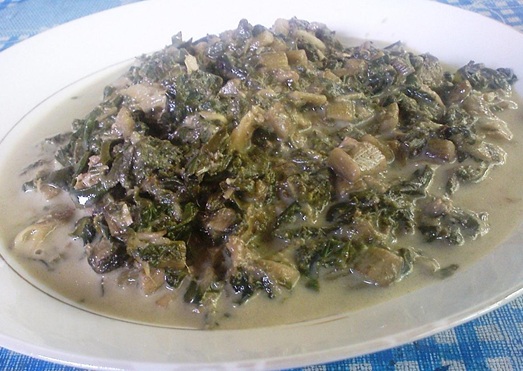
Watch our Cooking Video on How to Cook Laing
Recipes With Coconut Milk
Ginataang Halo-Halo
Ginataang Langka (Unripe Jackfruit Stewed in Cococnut Milk)
Laing (Taro Leaves Stewed in Coconut Milk)
Ginataang Puso ng Saging (Banana Heart Blossom Stewed in Coconut Milk)
Bibingka Recipe
Pichi-Pichi Kakanin Filipino Recipe
Go BACK to HOME
If you like the recipe you just found, please share it...
Follow us on Social Media
BROWSE MORE FILIPINO RECIPES
What Do You Think About this Recipe? Anything You Want to Share?
Share it!
Watch our latest cooking videos on YouTube!
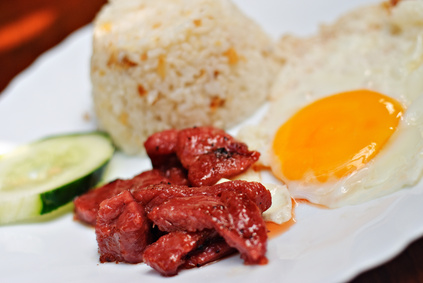
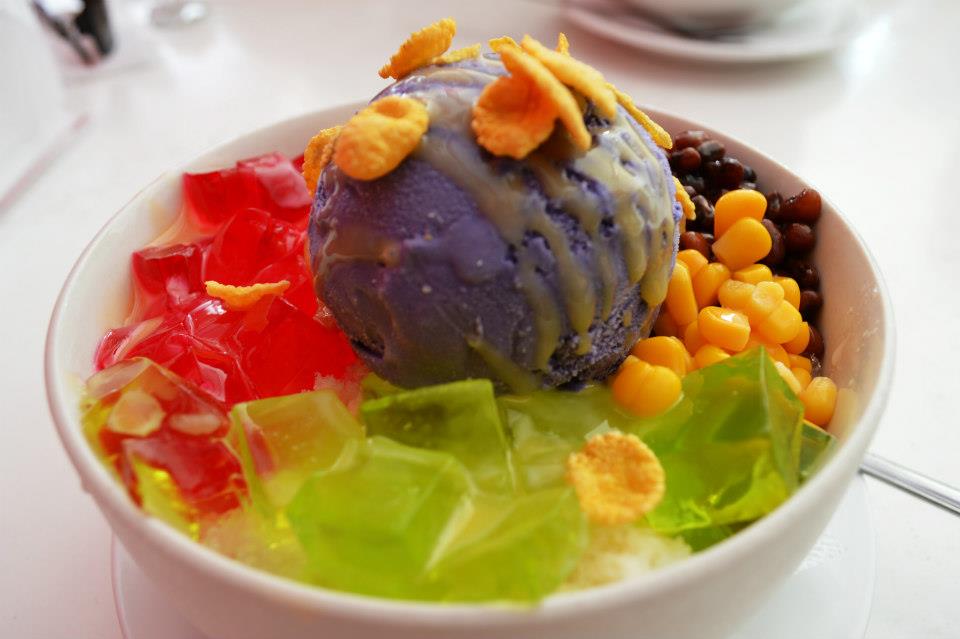
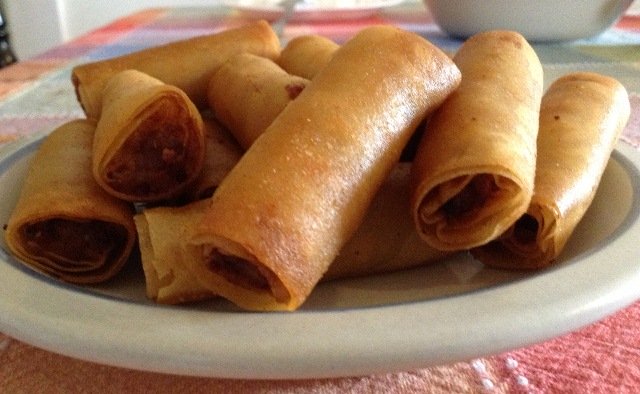
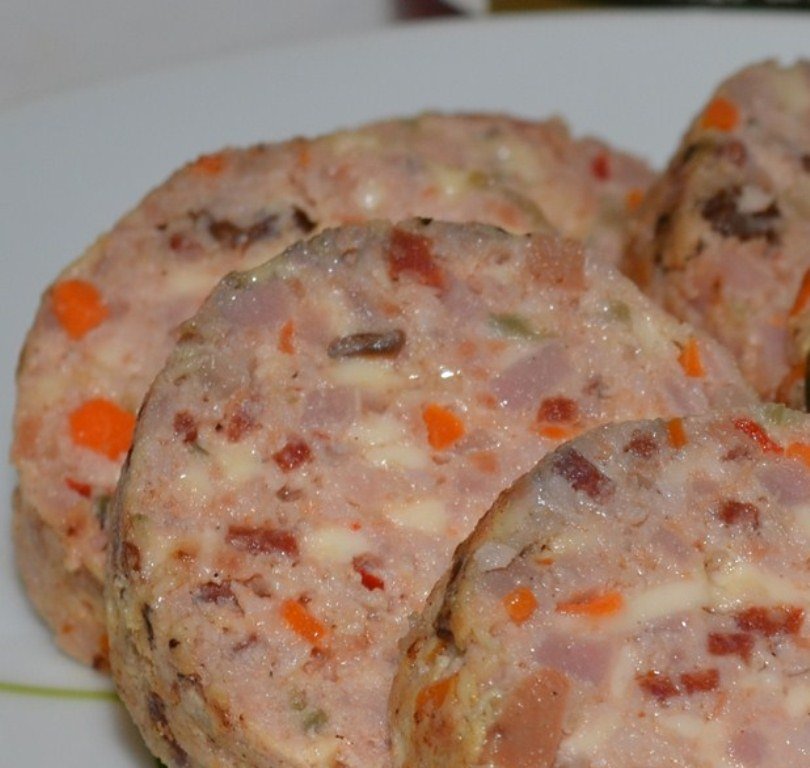
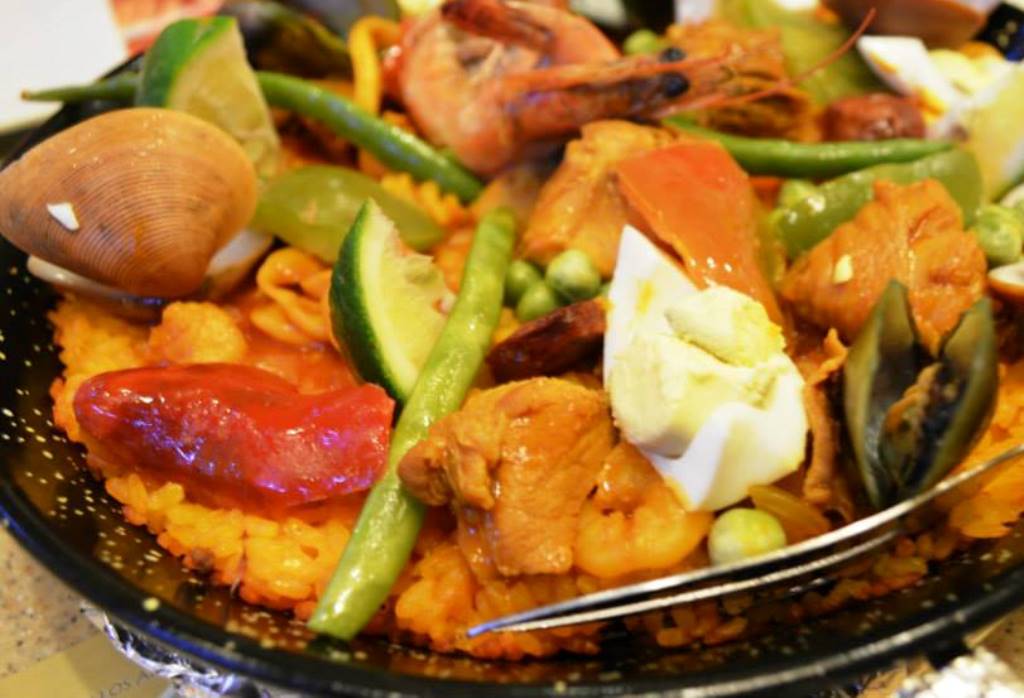 Arroz Valenciana
Arroz ValencianaPang-almusal Ideas
Hamonado Recipe
Ginisang Monggo with Gata




